
Let’s talk about PanPastels! If you’re an artist just dipping your toes into the world of pastels, you may have heard someone mention that they use PanPastels in their work (usually in the context of creating blurry backgrounds or as an underpainting layer). After doing some research, you find out that one color is over $7 USD! Your next questions are likely…are PanPastels worth it? Why are they popular?
As an Amazon Associate, I earn a small commission from qualifying purchases. Product links may include affiliate links. If you choose to use an affiliate link to shop for art supplies, your support helps keep this site ad-free!
So what are PanPastels?
Just like the name implies, PanPastels are pastels pressed into a metal pan, housed in a plastic compact. The size and dimensions of a PanPastel are very similar to a makeup blush, bronzer, or powder foundation.
To apply the pastel from the plastic compact onto your surface, you’ll need to use a tool. Pan Pastels recommend their SOFFT Tool Blending Knives and Sponges. But as an alternative, you can use any soft – sponge item such as makeup sponges and foam-tipped eyeshadow applicators.
Where to Buy:
- SOFFT Tools Assorted Palette Knives (4 pack) with replacement sponges
- SOFFT Tools Assorted Art Sponges (4 pack)
- SOFFT Tools Small Sponge Applicator with 4 replacement heads
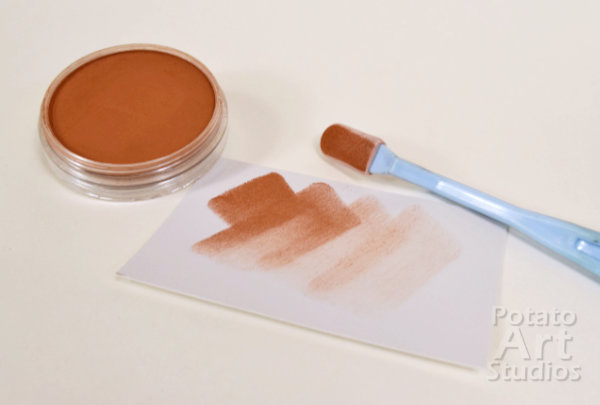
Cost Comparison
High quality art supplies unfortunately often cost a lot of money. It’s important to evaluate what you’re getting for your dollar. I’ve listed several well-established pastel brands in comparison to PanPastel in the table below. The pastel stick dimensions are for full-sticks. The price and product information were taken from Blick.com in September 2020. Due to the different stick sizes, I have calculated the price for one cubic inch of pastel to normalize the price relative to volume. Note the PanPastel length is the pan depth. This measurement was calculated based from the company’s reported pastel quantity of 9 ml per pan.
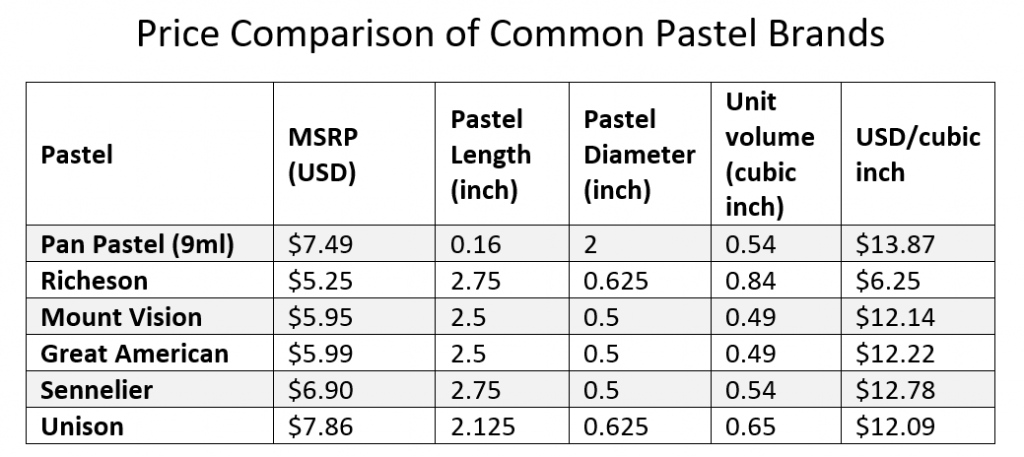
So, what does this tell you?
PanPastels are expensive, but they are priced within the normal range for professional-quality supplies. You’re not necessarily getting overcharged for a pan of pastel, but the sticker shock can be surprising to new artists. There is no uniform size for pastel stick. However, the overall range of price per cubic inch is consistent with many brands (the one exception is Richeson).
Remember that the MSRP (Manufacturer’s Suggested Retail Price) is just a guideline for pricing. Many art stores will sell supplies below MSRP. Sets are often bundled at prices lower than purchasing colors individually.
Where to Buy (PanPastels are available individually and in sets larger than the items listed below):
- 7 color curated sets with 10 color storage tray (MSRP $49.99 USD)
- 5 color and 10 color assorted sets (MSRP $27.49 (5 color), $54.99 (10 color))
PanPastel Storage Options
PanPastels have a threaded bottom so colors can be interlocked in stacks. There are also two plastic trays with a capacity of 10 or 20 colors which can be purchased separately. The trays are made of clear molded plastic and come with a lid. I do not have experience with using the plastic trays so I cannot provide opinions on how durable they are, but there are many YouTube and blog reviews featuring these items.
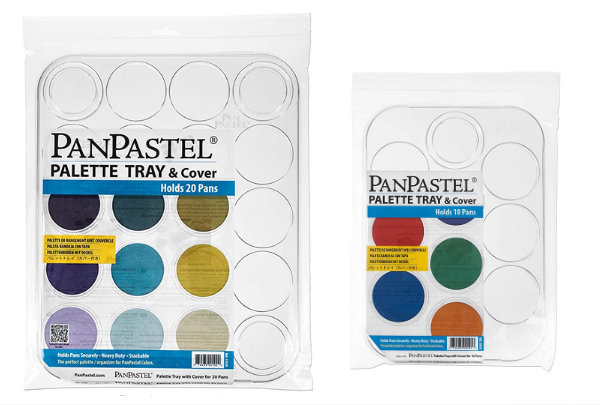
Where to buy:
- PanPastel Palette Tray with Lid (10 color capacity) (MSRP $11.99 USD)
- PanPastel Palette Tray with Lid (20 color capacity) (MSRP $15.50 USD)
PanPastel vs. Pastel Stick Versatility
I feel that PanPastels main claim to fame is that their large pan format allows the artist to be flexible in their application of pastel when used with their SOFFT tools. My personal opinion is that PanPastels allows a small convenience, but the same effect can be achieved with any pastel stick.
With very soft pastel brands such as Sennelier, it is still possible to use SOFFT tools. I rub the SOFFT tool blending knife along the length of the pastel stick and it picks up pastel EXACTLY THE SAME AS THE PAN PASTEL.
Not all pastel brands are soft enough to be picked up with friction from the SOFFT sponges alone. If you find that your pastels are too firm for sponges, rub the pastel stick on a sheet of sandpaper (120-200 grit). This will turn the stick into a powder. Then apply the pastel powder with the sponge. Be aware that using this method will generate more dust. If you already have pastel sticks and wish to have a similar experience with PanPastels, I would purchase a few SOFFT tools in various sizes and try this sandpaper technique.
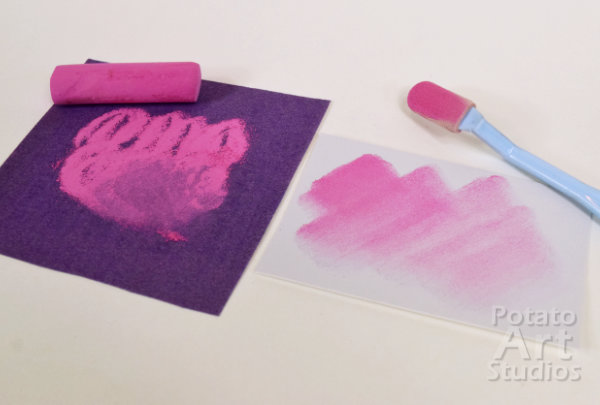
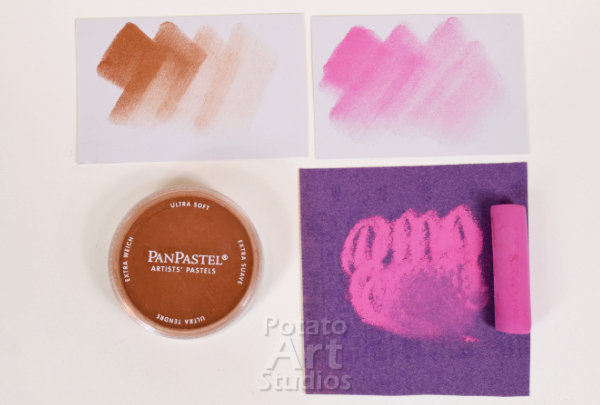
Pastel Dimensions
I’ve included a section focused on the dimensions of pastels to emphasize the point about the difference between a PanPastel compared to a traditional pastel stick. I believe this is important because this ties into how efficiently you can work as an artist. I find that when I can spread out my colors, I have quick and easy access to the colors I need.
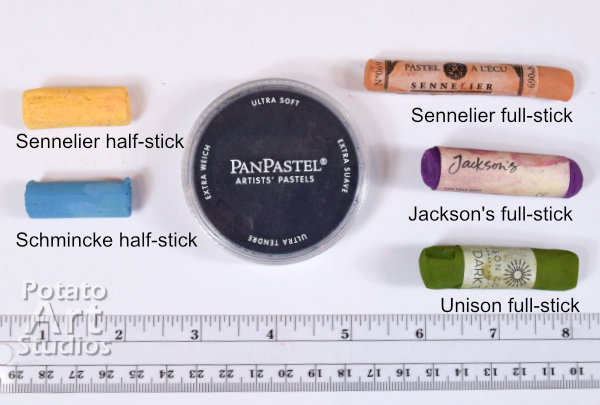
To put this into context, I created a layout showing how much space pan pastel colors take up relative to half stick and full stick sets on a 3×4 foot table. I am most familiar with the Sennelier line of pastels, so I’ve provided several sets for comparison.
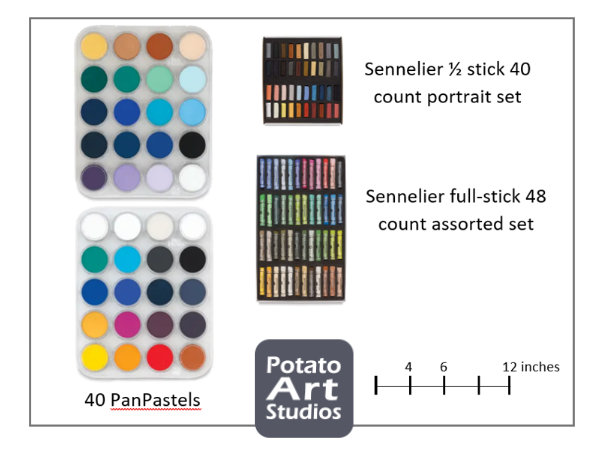
If you are fortunate to have a dedicated room for your art, space may not be a concern for you. However, I want to acknowledge that many artists work in smaller spaces or make improvised art studios within their homes. Maximizing space can be a higher priority for some artists and this may be a factor in your purchasing decision.
One option to temporarily expand your work area would be to pick up a small folding TV table similar to the one below. The tabletop can easily hold several trays of pastel sticks or PanPastels.
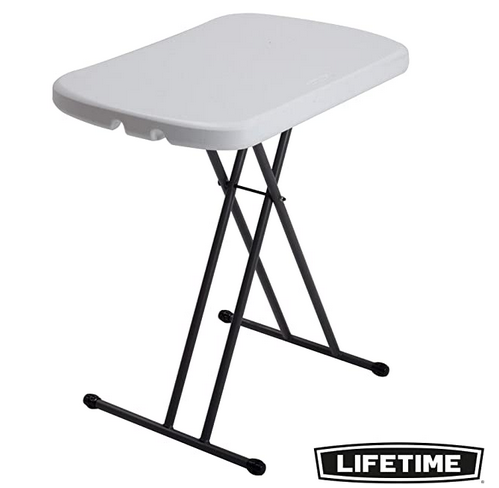
Where to buy:
- Lifetime Adjustable Folding Table TV Tray (MSRP $40 USD)
My overall opinions on PanPastels
If you’ve made it this far, you may have already picked up on some of my issues with PanPastels. I’m in a situation where I’ve already invested in several high-quality pastel stick sets over the years – and I love my current pastel collection. It doesn’t make financial sense for me to repurchase the colors I already own in a slightly different format.
My second issue is how much space PanPastels take up. I work on a tabletop easel on a standard desk. With my pencils, sharpeners, rulers and blending tools already consuming a fair share of valuable real estate, I just don’t have the space to lay out dozens of large pans of PanPastels.
The one case that I can imagine myself procuring PanPastels is for common background colors. I currently offer 5 standard pastel background colors and I’ve repurchased individual colors as I’ve used up my sticks. If I happen to come across a good sale for PanPastels for the colors I most frequently use (grays and browns), I may choose to purchase from the brand.
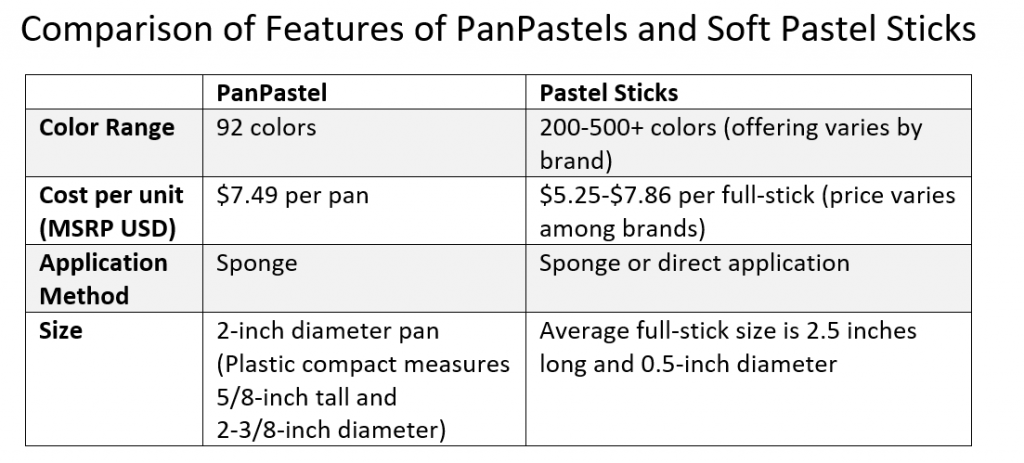
Some Final Thoughts
The main advantage of PanPastels is that they are relatively lower dust than standard pastel sticks. If you have respiratory issues such as asthma or COPD, I would recommend prioritizing your health and invest in PanPastels so that you can still make art with reduced risk.
The second advantage of PanPastels is the clear labeling of the color on the underside of the pan. Many artists choose to remove the outer paper sleeve on pastel sticks. The paper sleeve often contains important information about the brand and color name/number. When reordering colors, it is far easier to reorder PanPastels over pastel sticks (which will need to be compared to physical or online color charts).
If you’re an artist still undecided on which pastel format you would like to try, I would highly recommend sampling a few colors in both pan and stick format (along with some SOFFT sponges). Many pastel manufacturers sell colors individually (i.e. open stock). Purchase 3-5 colors that you know you’ll frequently use and try them out for yourself. Do not pressure yourself to buy a complete set prior to trying out the medium. Every artist is unique and has different preferences. Just because one artist speaks highly of a specific brand does not mean that it is the only brand you should purchase.
Interested in learning about the supplies I frequently use? I have my pastel supply list in a separate blog post here:
What are your thoughts on PanPastels? Let me know in the comments below.
-Lauren
1 thought on “What are PanPastels?”